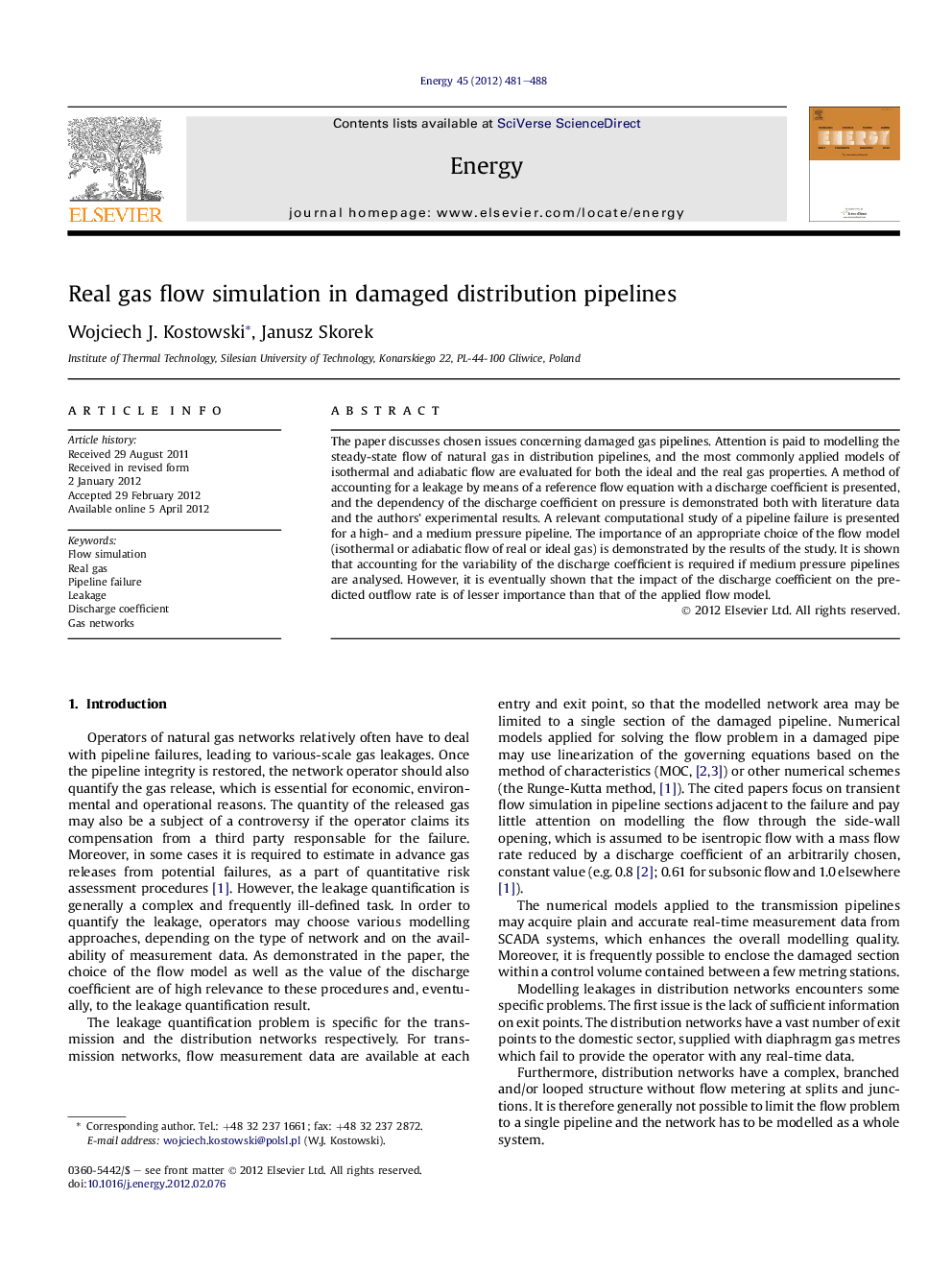| Article ID | Journal | Published Year | Pages | File Type |
|---|---|---|---|---|
| 1733693 | Energy | 2012 | 8 Pages |
The paper discusses chosen issues concerning damaged gas pipelines. Attention is paid to modelling the steady-state flow of natural gas in distribution pipelines, and the most commonly applied models of isothermal and adiabatic flow are evaluated for both the ideal and the real gas properties. A method of accounting for a leakage by means of a reference flow equation with a discharge coefficient is presented, and the dependency of the discharge coefficient on pressure is demonstrated both with literature data and the authors' experimental results. A relevant computational study of a pipeline failure is presented for a high- and a medium pressure pipeline. The importance of an appropriate choice of the flow model (isothermal or adiabatic flow of real or ideal gas) is demonstrated by the results of the study. It is shown that accounting for the variability of the discharge coefficient is required if medium pressure pipelines are analysed. However, it is eventually shown that the impact of the discharge coefficient on the predicted outflow rate is of lesser importance than that of the applied flow model.
► Comparison of real/ideal gas, isothermal/adiabatic gas flow in a damaged pipeline. ► Variability of the discharge coefficient with pressure is demonstrated. ► Isothermal model predicts wrong values of downstream pressure, not just temperature. ► Isothermal model may cause significant error (for 2 case studies is >20%). ► Error in the discharge coefficient has a weak influence on the predicted flow rate.
